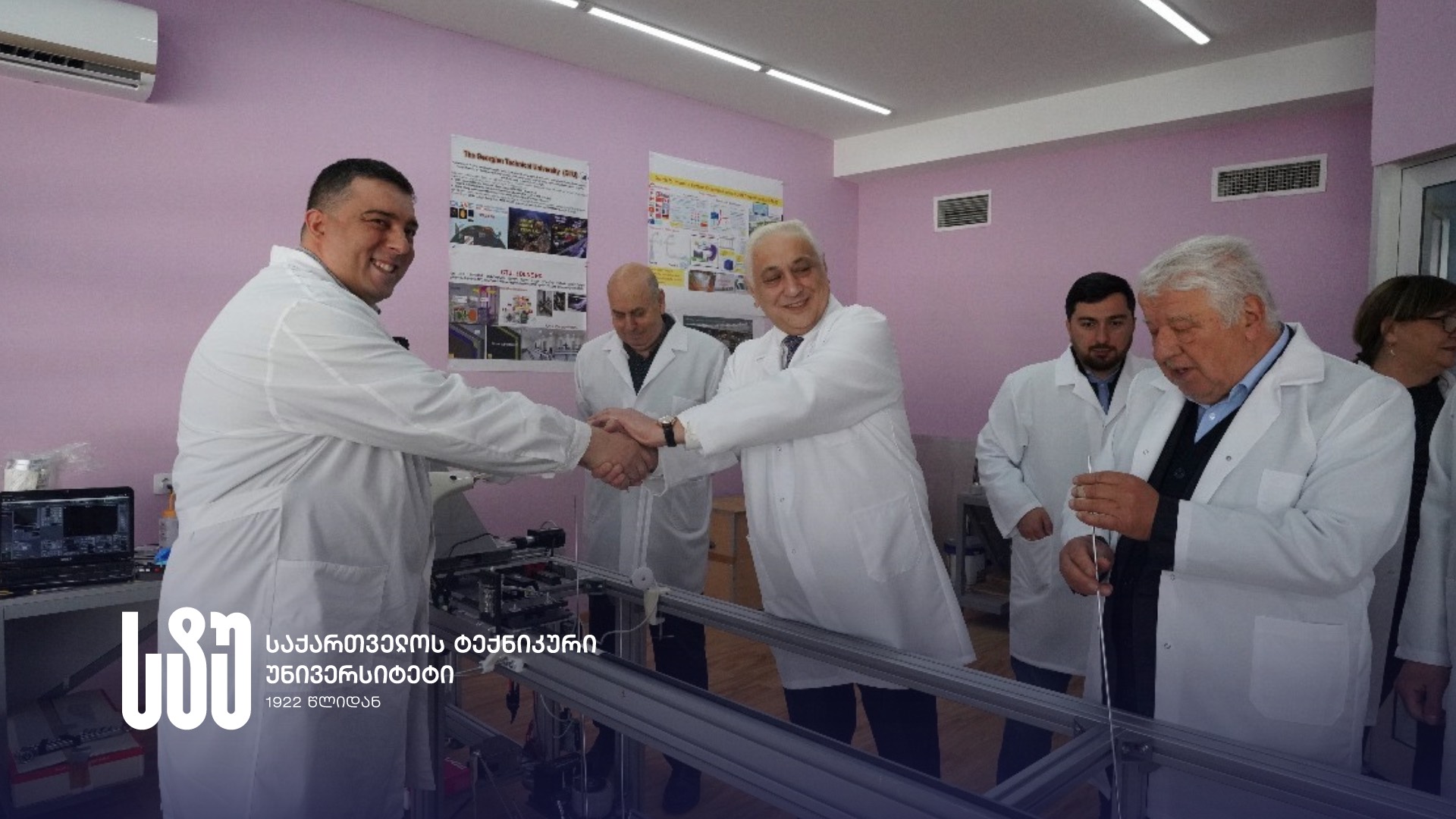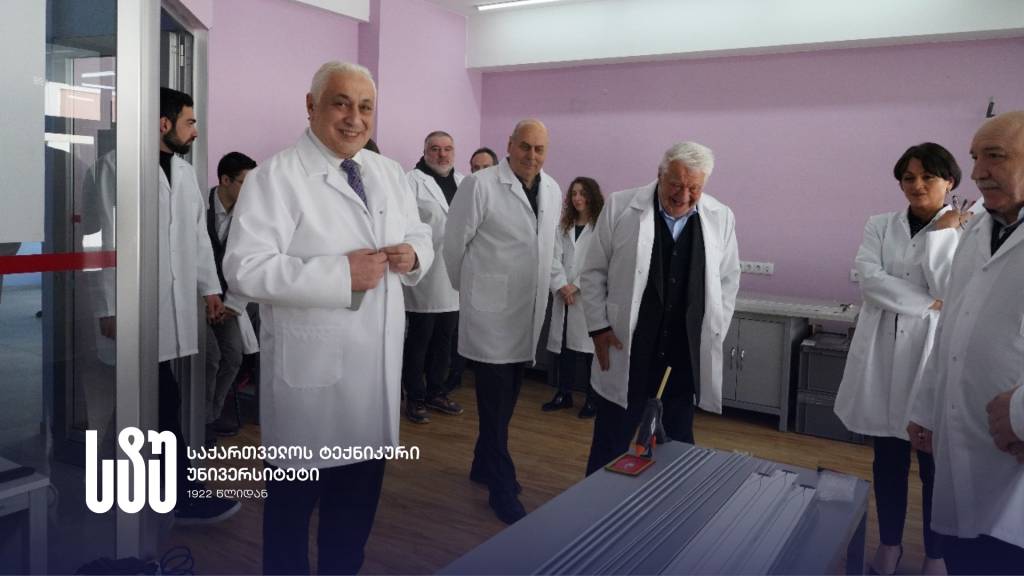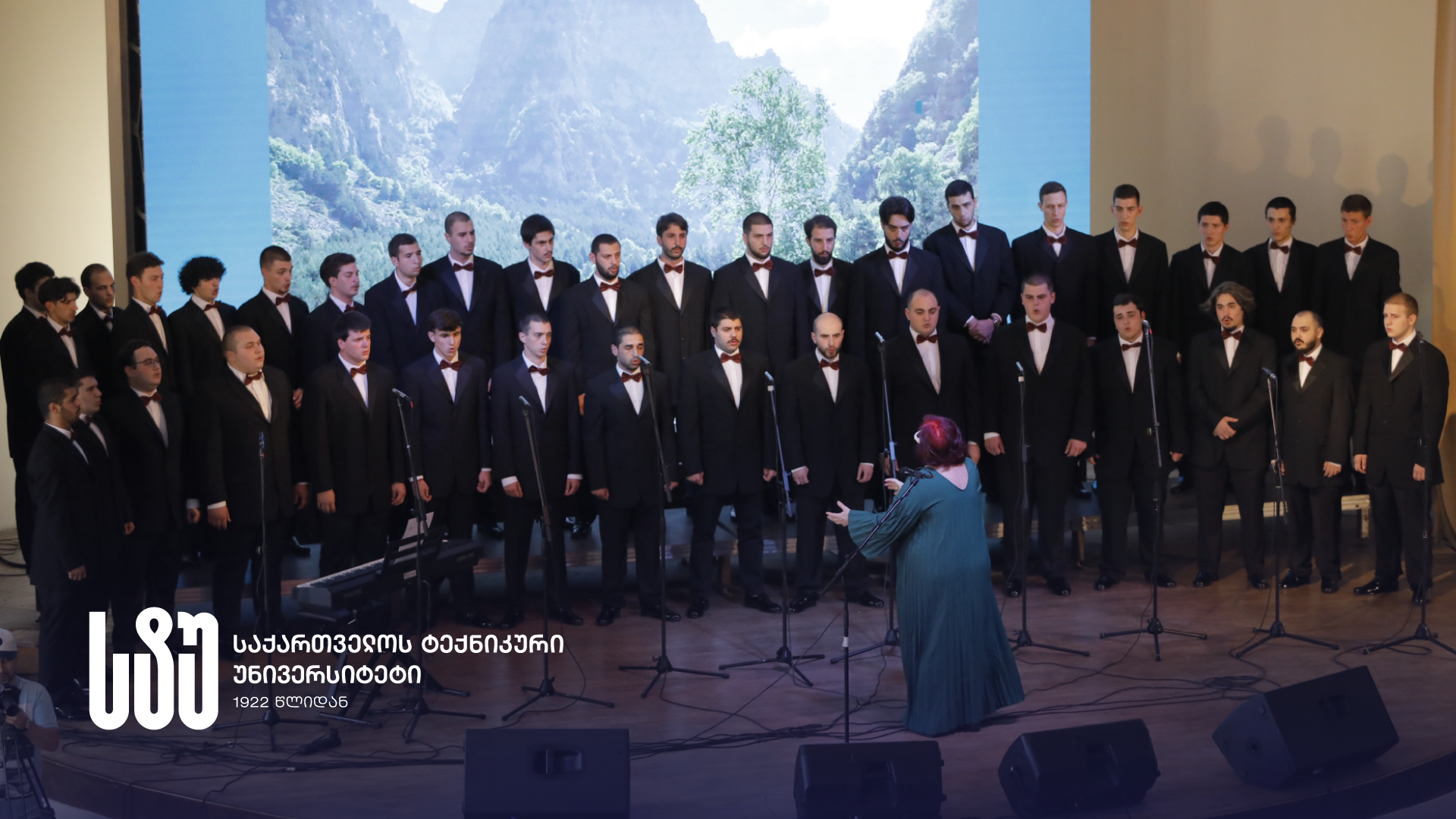Scientists to Produce New Generation Straw Track Pipes for the First Time in the World at GTU Newly Opened Straw Laboratory
17-04-2025
“Another important innovation has been laid at the Georgian Technical University. The innovation, which was introduced within the walls of our university and was implemented for the first time not only in Georgia but also worldwide, is of great importance from a scientific and national perspective. The pilot plant for producing new-generation straw track pipes places the Georgian Technical University at the epicenter of modern research in nuclear and high-energy physics. Another success of the Georgian Technical University is the confirmation of the high professionalism of our scientists, researchers, and engineers. It opens the door for us to new, more highly qualified collaboration with the world’s leading research centers,” said Academician David Gurgenidze, Rector of the Georgian Technical University, at the opening ceremony of the first pilot plant for the production of new generation straw track pipes at the university.
During the pilot production of straw track tubes based on the Straw Laboratory, scientists from the Scientific Research Institute of Quantum Physics and Engineering Technologies of the Georgian State University will, for the first time in the world, use the latest technologies to manufacture 5 mm diameter straw tubes from 12 and 15 microns (µm) tape of aluminized Mylar.
The pilot production of new-generation straw-track tubes was opened by the Rector of the Georgian Technical University, Academician David Gurgenidze, and the Director of the Institute of Quantum Physics and Engineering Technologies of the Georgian Technical University, Head of the CERN-CMS Group of the Georgian Technical University, and the representative of the Georgian delegation at CERN, Professor Zviad Tsamalaidze, at the Zhiuli Shartava Technical and Technological Training and Research Laboratory Complex.

As Academician David Gurgenidze noted in his speech, for the first time in the world, thanks to the most accurate and sophisticated ultrasonic welding technology developed by scientists at the Georgian Technical University, it is now possible to manufacture new generation straw tracker tubes from 12 and 15-micron (µm) aluminized Mylar tape. The pilot production will involve research, manufacturing, and testing of new thin-walled straw tubes for straw trackers, their installation in the detector, and testing of system characteristics.
According to David Gurgenidze, straw tubes are the main link and an integral part of the track detector system operating on the principle of gas amplification. Over the last 10-15 years, straw chambers have taken an important place in track detectors, which - due to their temporal, spatial, and energy characteristics - are used as track detectors in the largest scientific experiments in the world.
As the rector explained, straw detectors, due to their excellent technical characteristics and availability, are widely used in such major scientific centers as: the European Organization for Nuclear Research (CERN, Switzerland), experiments: ATLAS, NA-62, SHIP (in the future); the Japan High Energy Accelerator Research Organization (KEK, Japan), the COMET experiment currently underway at J-PARC; Fermi Laboratory (FERMILAB, USA), experiments: DUNE, Mu2e.
“For the first time in the world, 5 mm diameter straw tubes obtained using the latest technology are made from 12 and 15-micron aluminized Mylar tape. For the first time in our country and the world, scientists from the Georgian Technical University will manufacture them using the latest ultrasonic welding technology. For this very purpose, a pilot production facility has been opened at the university, based on the Straw Laboratory, which was also the first of its kind in Georgia. It is of utmost importance that our scientists at the university laboratory have solved the previously existing problem - the production of stable, long straw tubes. Specifically, tubes up to 5 meters long were produced with the latest equipment created at the university. Unlike the double-coiled straw tube of the previous design, the new generation of straw tubes does not use glue. Several experiments have shown that the weak point of double-coiled tubes when working in a vacuum was precisely the place of adhesion (for example, the track system in the Mu2e experiment). Using the latest ultrasonic technology, the straw tube has only a different welding point along the entire cylinder. Instead of the place where the spiral coil is attached, it now has one strip, which is shorter in total length than in the case of a coiled straw, which provides a minimal area for gas leakage and also allows us to fix the straw tubes in a stretched state for a long time,” said David Gurgenidze.
During the pilot production of straw track tubes based on the Straw Laboratory, scientists from the Scientific Research Institute of Quantum Physics and Engineering Technologies of the Georgian State University will, for the first time in the world, use the latest technologies to manufacture 5 mm diameter straw tubes from 12 and 15 microns (µm) tape of aluminized Mylar.
The pilot production of new-generation straw-track tubes was opened by the Rector of the Georgian Technical University, Academician David Gurgenidze, and the Director of the Institute of Quantum Physics and Engineering Technologies of the Georgian Technical University, Head of the CERN-CMS Group of the Georgian Technical University, and the representative of the Georgian delegation at CERN, Professor Zviad Tsamalaidze, at the Zhiuli Shartava Technical and Technological Training and Research Laboratory Complex.

As Academician David Gurgenidze noted in his speech, for the first time in the world, thanks to the most accurate and sophisticated ultrasonic welding technology developed by scientists at the Georgian Technical University, it is now possible to manufacture new generation straw tracker tubes from 12 and 15-micron (µm) aluminized Mylar tape. The pilot production will involve research, manufacturing, and testing of new thin-walled straw tubes for straw trackers, their installation in the detector, and testing of system characteristics.
According to David Gurgenidze, straw tubes are the main link and an integral part of the track detector system operating on the principle of gas amplification. Over the last 10-15 years, straw chambers have taken an important place in track detectors, which - due to their temporal, spatial, and energy characteristics - are used as track detectors in the largest scientific experiments in the world.
As the rector explained, straw detectors, due to their excellent technical characteristics and availability, are widely used in such major scientific centers as: the European Organization for Nuclear Research (CERN, Switzerland), experiments: ATLAS, NA-62, SHIP (in the future); the Japan High Energy Accelerator Research Organization (KEK, Japan), the COMET experiment currently underway at J-PARC; Fermi Laboratory (FERMILAB, USA), experiments: DUNE, Mu2e.
“For the first time in the world, 5 mm diameter straw tubes obtained using the latest technology are made from 12 and 15-micron aluminized Mylar tape. For the first time in our country and the world, scientists from the Georgian Technical University will manufacture them using the latest ultrasonic welding technology. For this very purpose, a pilot production facility has been opened at the university, based on the Straw Laboratory, which was also the first of its kind in Georgia. It is of utmost importance that our scientists at the university laboratory have solved the previously existing problem - the production of stable, long straw tubes. Specifically, tubes up to 5 meters long were produced with the latest equipment created at the university. Unlike the double-coiled straw tube of the previous design, the new generation of straw tubes does not use glue. Several experiments have shown that the weak point of double-coiled tubes when working in a vacuum was precisely the place of adhesion (for example, the track system in the Mu2e experiment). Using the latest ultrasonic technology, the straw tube has only a different welding point along the entire cylinder. Instead of the place where the spiral coil is attached, it now has one strip, which is shorter in total length than in the case of a coiled straw, which provides a minimal area for gas leakage and also allows us to fix the straw tubes in a stretched state for a long time,” said David Gurgenidze.


